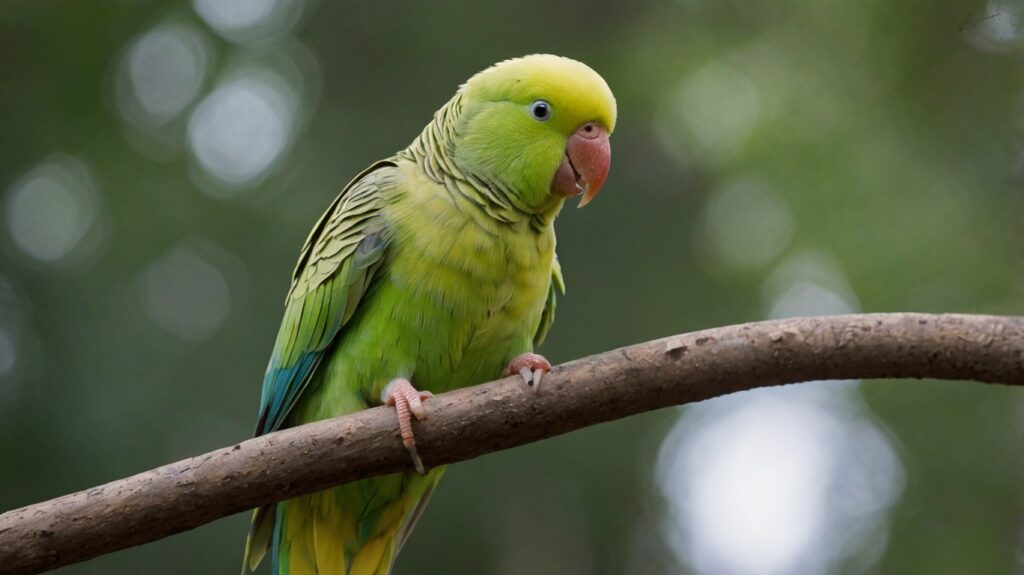Table of Contents
- Introduction
- Physical Characteristics
- Habitat and Distribution
- Diet and Feeding Behavior
- Reproduction and Lifespan
- Conservation Status and Efforts
- Conclusion
- FAQs
Introduction
The Echo Parakeet (Psittacula eques) is a rare and vibrant parrot species native to Mauritius. Once on the brink of extinction, this bird has become a symbol of successful wildlife conservation. Known for its bright green plumage and distinctive call, the Echo Parakeet plays a crucial role in its ecosystem. This article explores its habitat, behavior, threats, and recovery efforts.

Physical Characteristics
The Echo Parakeet is a medium-sized parrot with:
- Bright emerald-green feathers
- Long tail feathers (typical of Psittacula species)
- Red beak (brighter in males)
- Blue-tipped wings and tail
- Average length: 34–42 cm
Males exhibit a black neck ring, while females and juveniles have a fainter or absent ring.
Habitat and Distribution
Native Range
- Endemic to Mauritius, primarily in the Black River Gorges National Park and surrounding forests.
Preferred Habitat
- Upland evergreen forests
- Native palm-rich areas (for feeding and nesting)
- Regenerated woodlands (due to conservation efforts)
Diet and Feeding Behavior
The Echo Parakeet is primarily frugivorous, feeding on:
✔ Native fruits (e.g., Calophyllum, Sideroxylon)
✔ Flowers, seeds, and young leaves
✔ Occasionally cultivated fruits (leading to human conflicts)
Unlike some parrots, it rarely feeds on the ground, preferring treetops.
Reproduction and Lifespan
Breeding Season
- September–February (peak in October–December)
Nesting Habits
- Uses tree cavities (often old woodpecker nests)
- Lays 2–4 eggs, incubated for ~25 days
Lifespan
- Up to 15–20 years in the wild (longer in captivity)
Conservation Status and Efforts
Threats
- Habitat destruction (deforestation for agriculture)
- Invasive species (rats, monkeys raiding nests)
- Disease (psittacine beak and feather disease)
Recovery Success
- IUCN Status: Endangered → Vulnerable (2021)
- Population Growth: From 10–12 birds (1980s) to ~750 today
- Key Conservation Actions:
- Captive breeding programs
- Nest protection from predators
- Reforestation initiatives
Conclusion
The Echo Parakeet’s remarkable recovery showcases the power of targeted conservation. While still vulnerable, its population rebound offers hope for other endangered species. Continued efforts in habitat protection and invasive species control remain critical for its survival.

FAQs
1. Why is it called the Echo Parakeet?
The name comes from its distinctive echoing call heard in Mauritius’ forests.
2. How many Echo Parakeets are left?
Roughly 750 individuals exist in the wild as of recent surveys.
3. What’s the difference between Echo Parakeets and other parrots?
They are Mauritius-endemic, with unique green plumage, red beak, and reliance on native fruits.
4. Can Echo Parakeets be kept as pets?
No, they are protected by law, and capturing them is illegal.
5. What helped save the Echo Parakeet from extinction?
Habitat restoration, captive breeding, and predator control were key factors.
